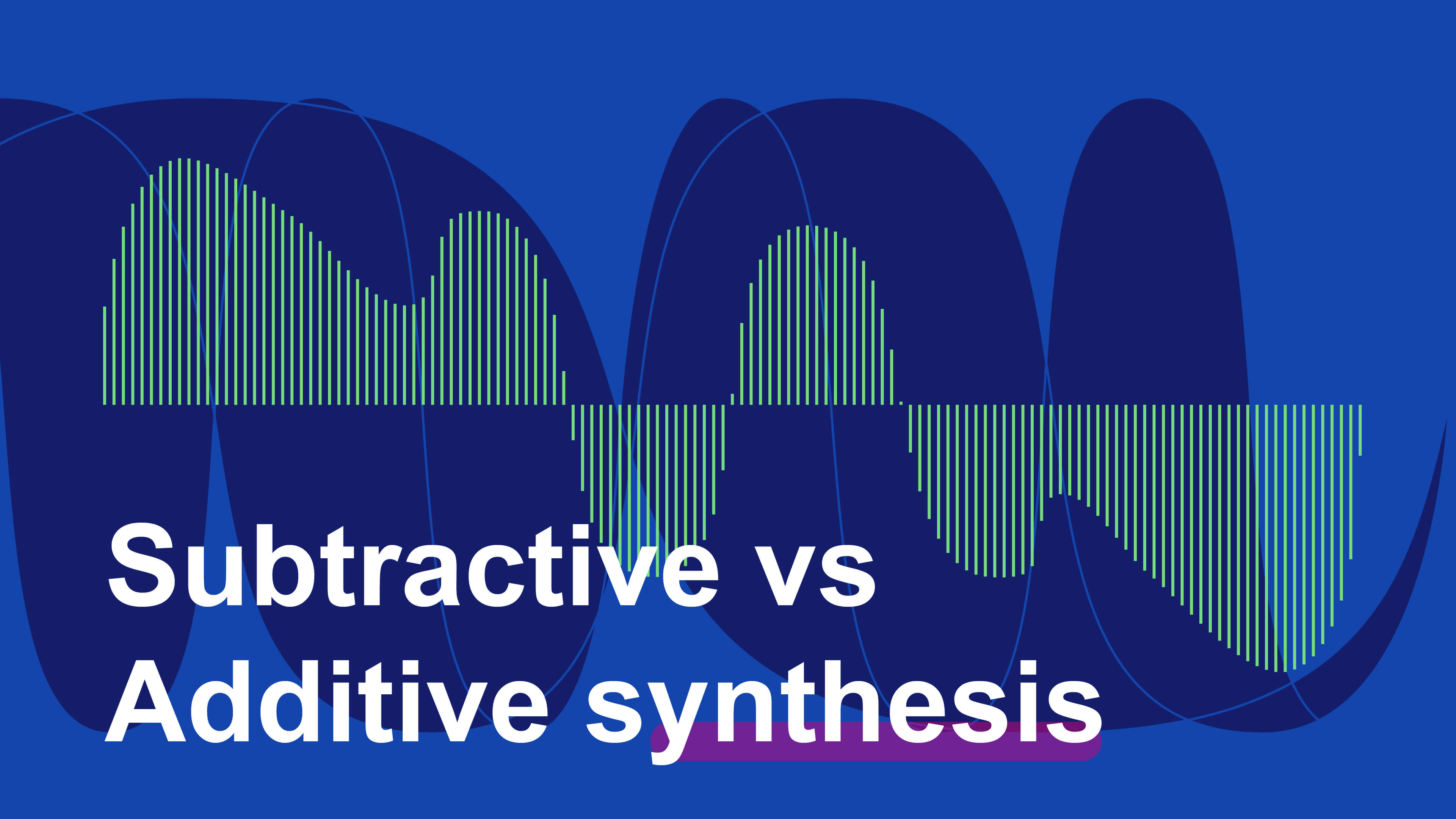Additive vs subtractive synthesis: sound design and synthesis for beginners
Synthesizers have transformed contemporary music and been a huge part of electronic music production’s evolution in countless ways.
Synthesis has evolved dramatically since the first subtractive synthesizers like Moog’s Minimoog, Sequential Circuits’s Prophet 5, and Roland’s Juno 60 hit the market. Today, music producers are using numerous forms of synthesis and sampling to create unique, interesting sounds.
A number of synthesis techniques now dominate the music production scene, and we’re going to talk about subtractive & additive synthesis and what sets them apart.
I mean, their names say it all. The words “subtractive” and “additive” do tell you what you need to know. But what are you subtracting and adding together to make sounds?
What is subtractive synthesis?
Subtractive synthesis entails removing harmonics from a signal with filters.
Harmonics are additional frequencies (known as harmonic overtones) stacked on top of a dominant frequency in a sound. They’re additional waveforms that add to the tone of a sound while the fundamental frequency determines the pitch.
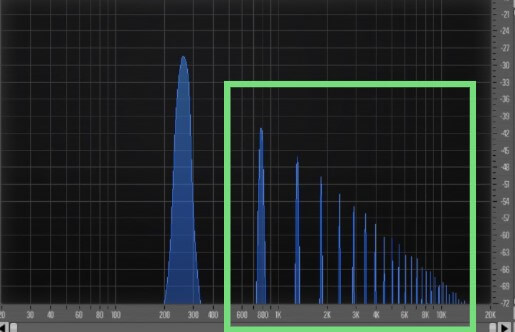
As a result, you can sculpt a new sound by attenuating the harmonics you don’t want in your sound.
We say “sculpt” because that’s more or less what subtractive synthesis is. For instance, imagine an oscillator signal as a big block of ice. As you chisel away at the ice you can sculpt a glamorous ice sculpture.
In the same way, you can design a new sound by attenuating or removing harmonics from an audio signal.
What is additive synthesis?
In contrast, additive synthesis entails adding sine waves on top of one another to build a signal rather than removing harmonic overtones from a signal.
The idea of additive synthesis is that any waveform can be broken down into a series of sine waves, no matter how complicated the sound is. In other words, the theory suggests that it’s possible to recreate any sound with the right combination of sine waves – because a sine wave is a pure tone – sitting in the right harmonic intervals at different amplitudes.
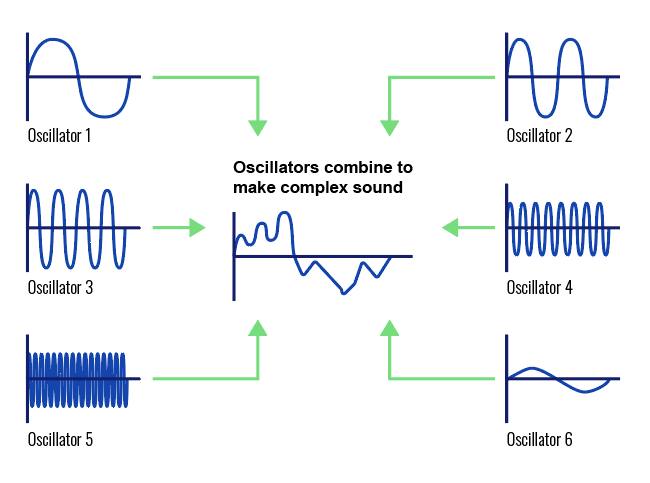
For example, starting with a sine wave at 100Hz as your fundamental frequency and adding more at every hundredth multiple (200Hz, 300Hz, 500Hz, etc.) in the frequency spectrum makes a sawtooth wave. On the other hand, adding sine waves only at odd multiples, 300Hz, 500Hz, and so on will make a square wave.
Every additional sine wave above the fundamental frequency is called a “partial“. Named so because they’re part of a bigger collective, partials add to the tone and sit above the fundamental frequency (which determines the loudness and pitch).
In practice, every partial helps determine whether the sound is bright or dark, mellow or harsh, and so on. In short, adding partials at different pitches with variable amplitudes creates a tone that is more unique.
What sounds can you make with additive synths?
Additive instruments like Native Instruments’ Razor are amazing for applying this additive synthesis technique. With additive synthesizers like NI’s Razor, you can create big landscapes that sound otherworldly, recreate the sound of organs (as they mechanically stack combinations of sinewaves), and more.
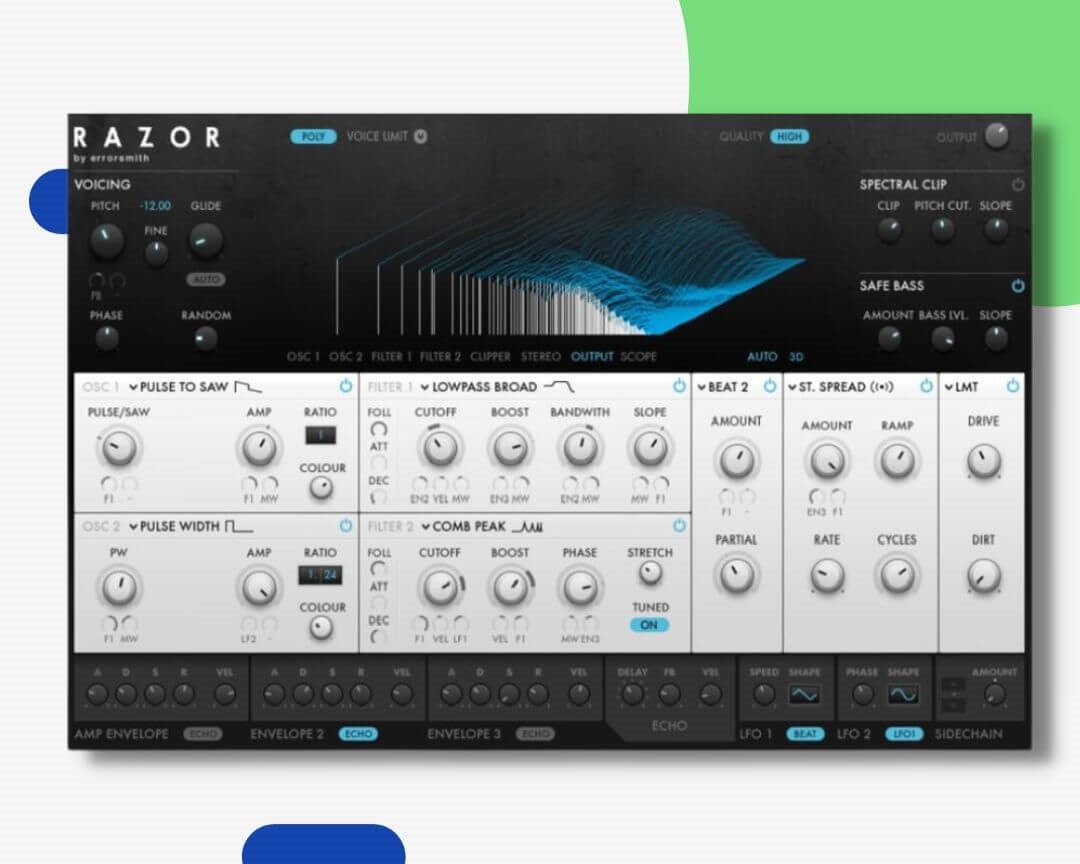
Additionally, you can synthesize bells that consist of a fundamental frequency and add partials to alter the tone. And simple pluck sounds, percussive hits, and more are bread-and-butter sounds in additive synths!
Getting creative with Additive synthesis
Now it’s time to go in the opposite direction and start adding sine waves together!
As we discussed earlier, different waveforms have harmonics at either even intervals, odd intervals, or both. And we also said how sine waves don’t have any harmonics whatsoever.
Well, you can add sine waves together at even and odd intervals in additive synthesis. And just as we automated the LFO and envelope modulation in subtractive synthesis, you can automate the amplitude of the sine waves at harmonic intervals.
Furthermore, adding partials at inharmonic intervals can produce dissonant and wavering sounds. And altering the phase of individual sine waves lets you get even more creative!
So the final timbre of your additive sound depends on the variety in pitch between partials. Then you can even add noise to your sound for a thicker texture.
How does subtractive synthesis work? The process of subtractive sound design
Firstly, you’ll need an audio signal – and to get one you need an oscillator. An oscillator generates a signal that oscillates between a minimum and maximum amplitude value extremely quickly, and you can determine the tone or timbre of that signal by choosing between different waveforms!
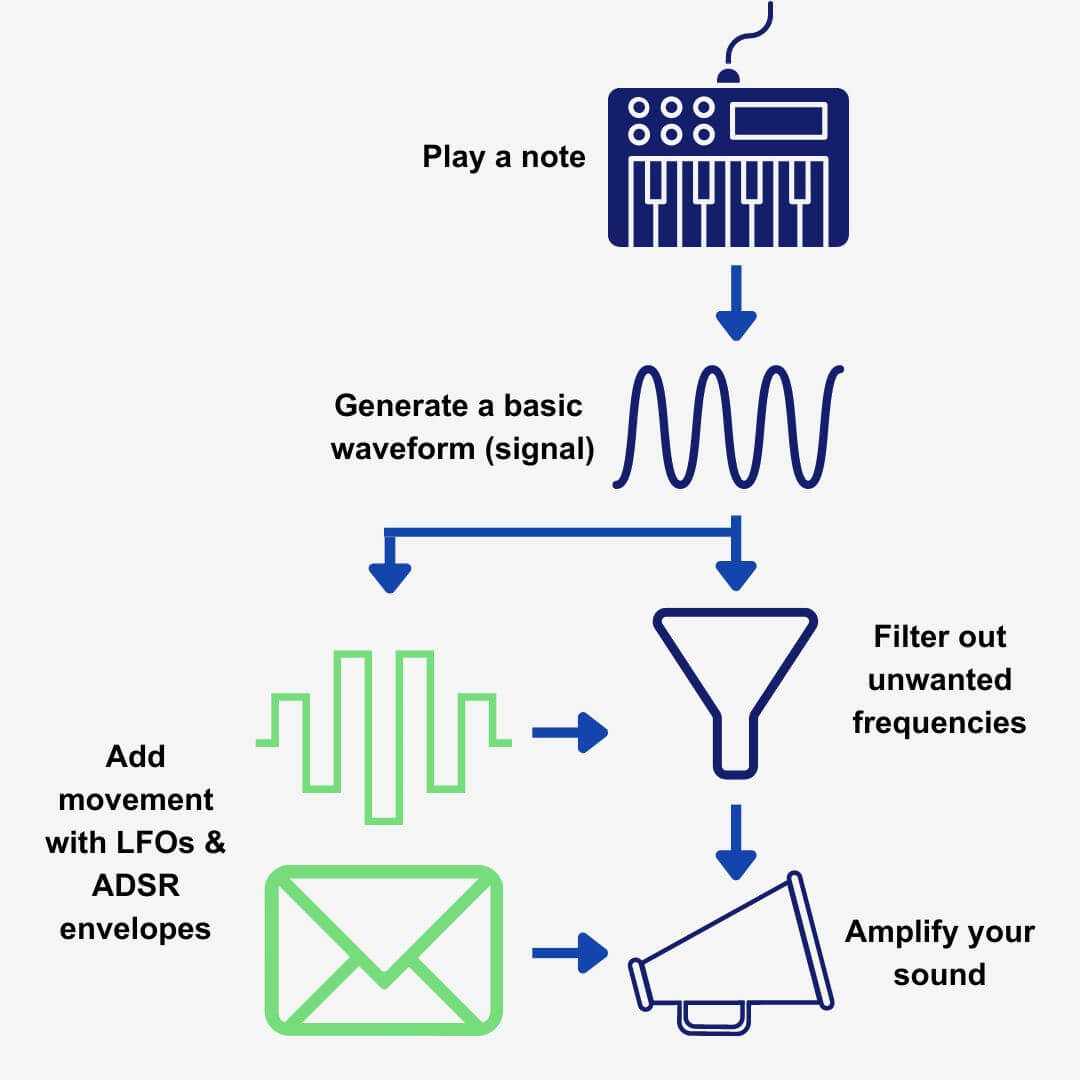
Generate a signal
The four common oscillator waveforms are:
- Sine waves
- Square waves
- Triangle waves
- Sawtooth waves
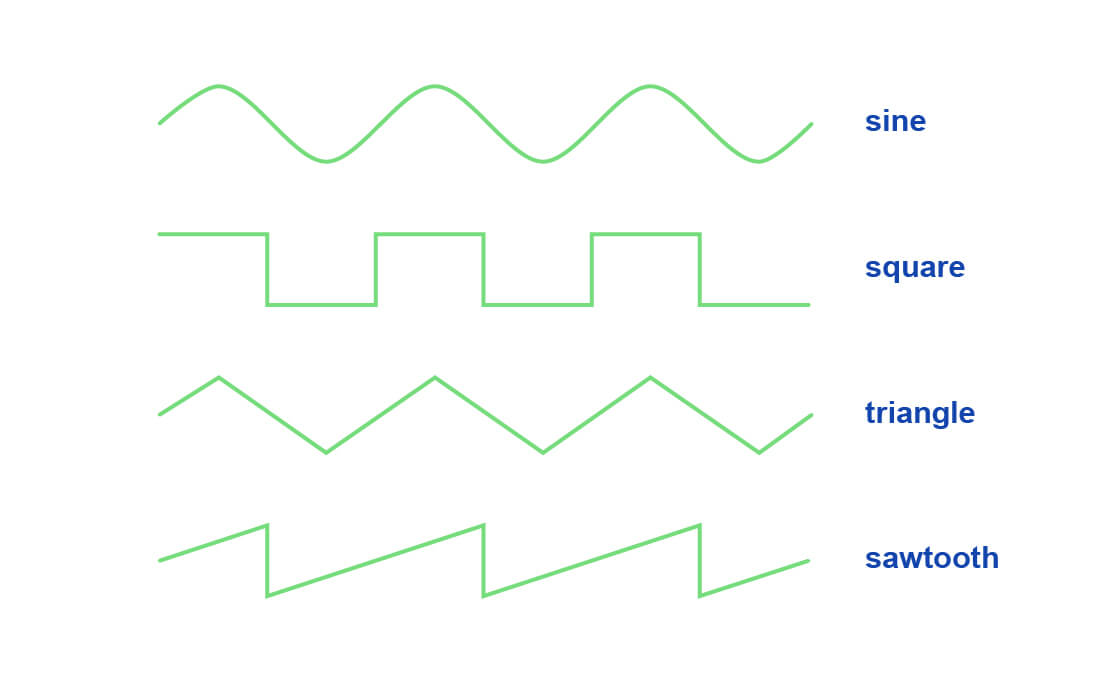
Sine wave
A sine wave is a pure tone consisting of one dominant frequency and no additional harmonics. Consequently, a sine wave isn’t a great choice for subtractive synthesis because there’s nothing to chisel away at.
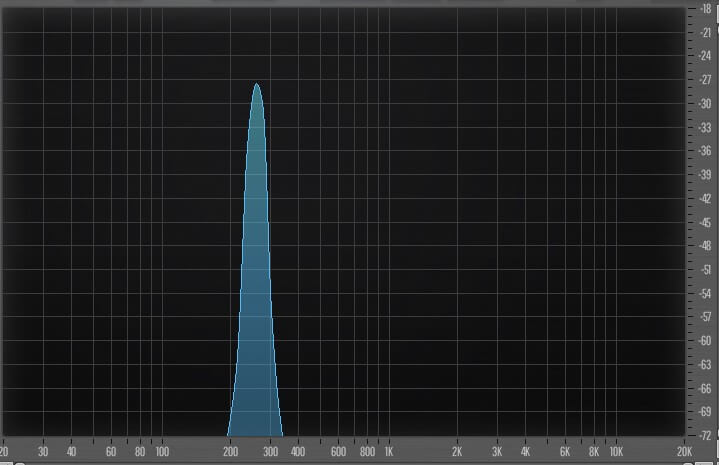
Square wave
But a much better choice is a square wave. A square wave earns the name of the “pulse wave” because it jumps between its minimum and maximum amplitude value suddenly. Moreover, the harmonic intervals of square waves sit at odd intervals, but they repeat in every other oscillation cycle rather than each one.

Additionally, the pulse wave has a “hollow” sound when compared to a sawtooth wave because each harmonic interval is a third as low in amplitude as the previous interval. As a result, it’s a great waveform for building ghost notes, 8-bt sounds & arpeggios, gritty basses, and more.
Sawtooth wave
The most harmonic waveform is the sawtooth wave, and its harmonics repeat in every oscillation cycle and sit at even intervals.
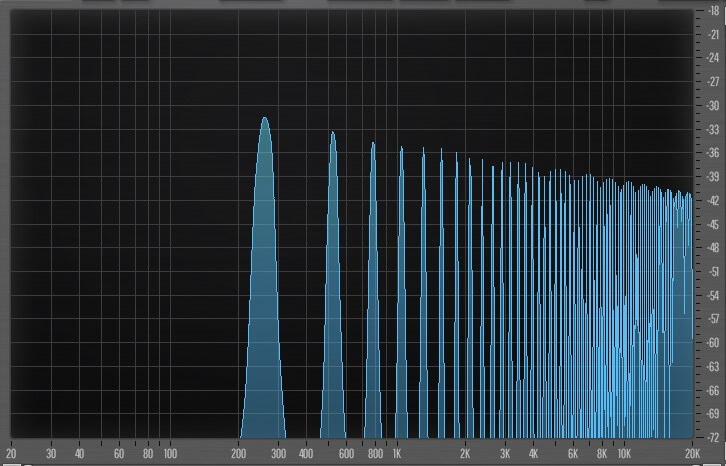
Named so because it looks like the teeth on a chainsaw, the sawtooth wave has the strongest buzzing sound that “shines” at higher octaves. Thanks to its many harmonics, the sawtooth wave is a great waveform for shaping strong leads!
Triangle wave
Finally, the harmonics of the triangle wave sit at odd intervals above fundamental, but their harmonic amplitudes drop off dramatically faster than those of square & saw waves!
Therefore, triangle waveforms aren’t quite as buzzy as square, but they’re certainly not as smooth as sine waves.
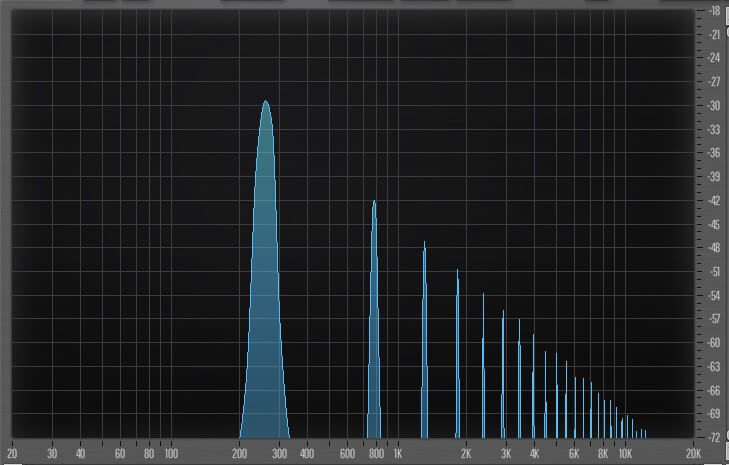
An oscillating signal that’s rich in harmonics lets you get the most out of subtractive synthesis. While sawtooth and square waves are stronger candidates, you can use a triangle wave for atmospheric sounds, ghost notes, and other light sounds.
Sine vs sawtooth
However, sine waves are pure tones with a narrow body of frequency content and no additional harmonics. Without all that much to filter away, they’re not so great for subtractive synthesis unless layered below another signal.

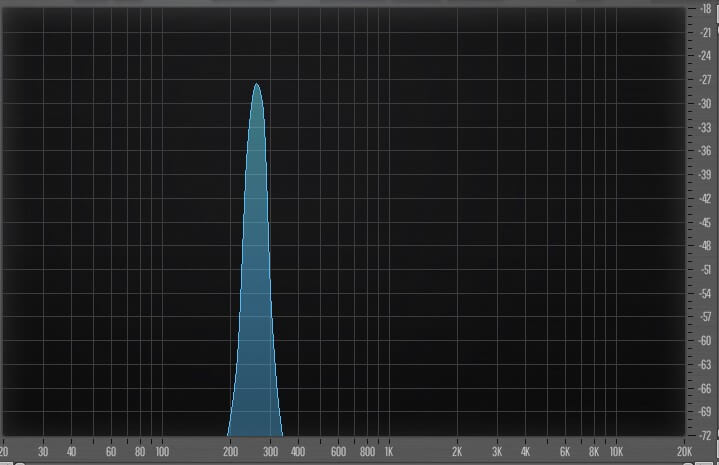
In contrast, sawtooth waveforms are packed with additional harmonics. As a result, you can create some pretty huge leads with subtractive synthesis by layering saw waves together!


In addition to filters, you can apply ADSR envelopes to give your sound the right shape too. Moreover, you can use ADSR envelopes & LFOs to modulate different synth parameters for interesting results.
With your harmonically rich oscillators, you can sculpt a sonic timbre out of these oscillating tones. Hardware synths such as the Prophet-5 or virtual soft synths like Massive allow you to create great sounds quickly with subtractive synthesis!
Layer your sound with more oscillators
Using multiple oscillators lets you thicken up your signal before you remove any harmonics.
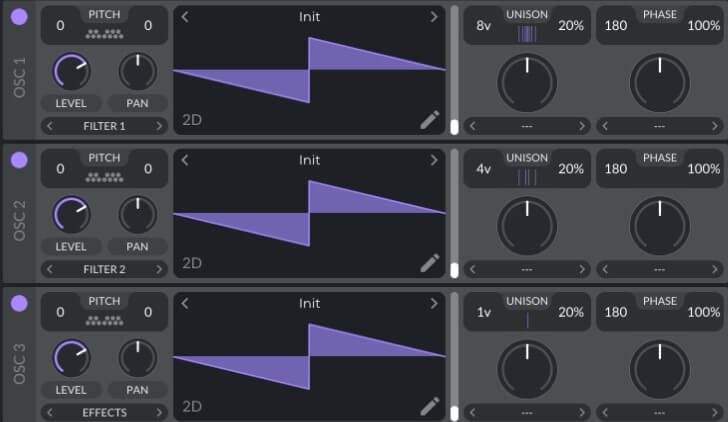
Above, saw waves sit in each oscillator and I’ve given the first & second oscillators additional voices (unison) to make them wider and brighter in higher octaves.
Filter out some harmonics
Our audio signal is a constant tone. It’s pretty boring right now because we haven’t removed any harmonics or modulated any movement.
Rather than manually adjusting the cut-off frequency of my filter, I’m going to modulate the cut-off point so the synth takes care of itself.
There are two tools for modulation – envelopes & LFOs. I’m going to show you how both are great for different types of sound.
First, let’s say you wanted your sound to trigger once – this is where an envelope is the better choice.
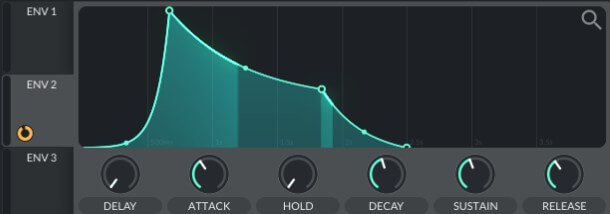
Above is an ADSR envelope. You can see how I’ve dialed in a slightly delayed attack with a gradual decay, a slight bit of sustain, and a bit of release.
Now, I’m routing the envelope to the cut-off frequency of the filter below.
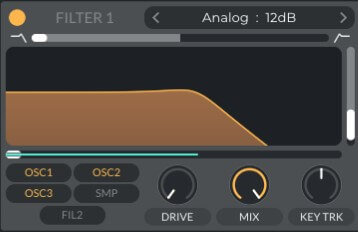
And here’s how it sounds…
The peak amplitude comes in gradually, but once it does the sound has some life. As a result, an ADSR envelope would be great for creating melodic sounds you can play on the keyboard.
On the other hand, you could use an LFO to have modulation that repeats. In this example, I have drawn a plucky LFO shape that looks similar to the envelope we used.
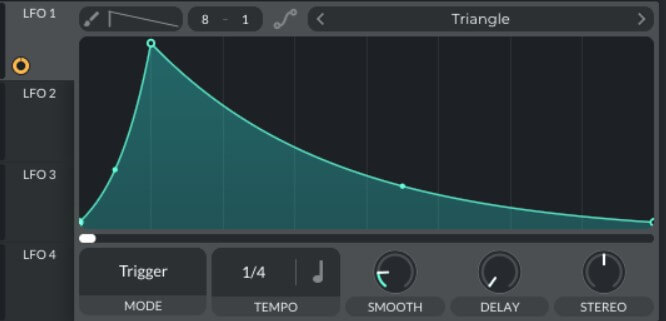
I’ve set the LFO rate to “1/4” so the LFO will repeat four times in every bar and I’ve routed the LFO to the cut off frequency of the filter. Here’s how it sounds
Well, it’s certainly got more life in it! I reckon this sound could sit in a Bass House, Jump Up DnB, Bro Step, or even a Hybrid Trap track.
Subtractive synthesis is an easy way to create sounds easily. You can develop basses, leads, pads, drones… anything really.
What are the different types of synthesis?
Including additive & subtractive, there are a total of 6 methods of synthesis commonly used in music production today:
- FM synthesis
Frequency modulation is a method of synthesis whereby the frequency of one signal is modulated by the frequency of another. - Wavetable synthesis
Wavetable synthesis converts a waveform into a morphable “wavetable”, and the wavetable is made up of many “subtables” which oscillate like a regular waveform signal. Then you can modulate the wavetables in numerous ways. - Granular synthesis
Granular synthesis goes one step further than wavetable synthesis – it cuts a waveform into tiny segments of audio (granules) that you can modulate. - Modular synthesis
Instead of buying an all-in-one standalone synth, you could buy synthesizer modules and design your own modular synth!
